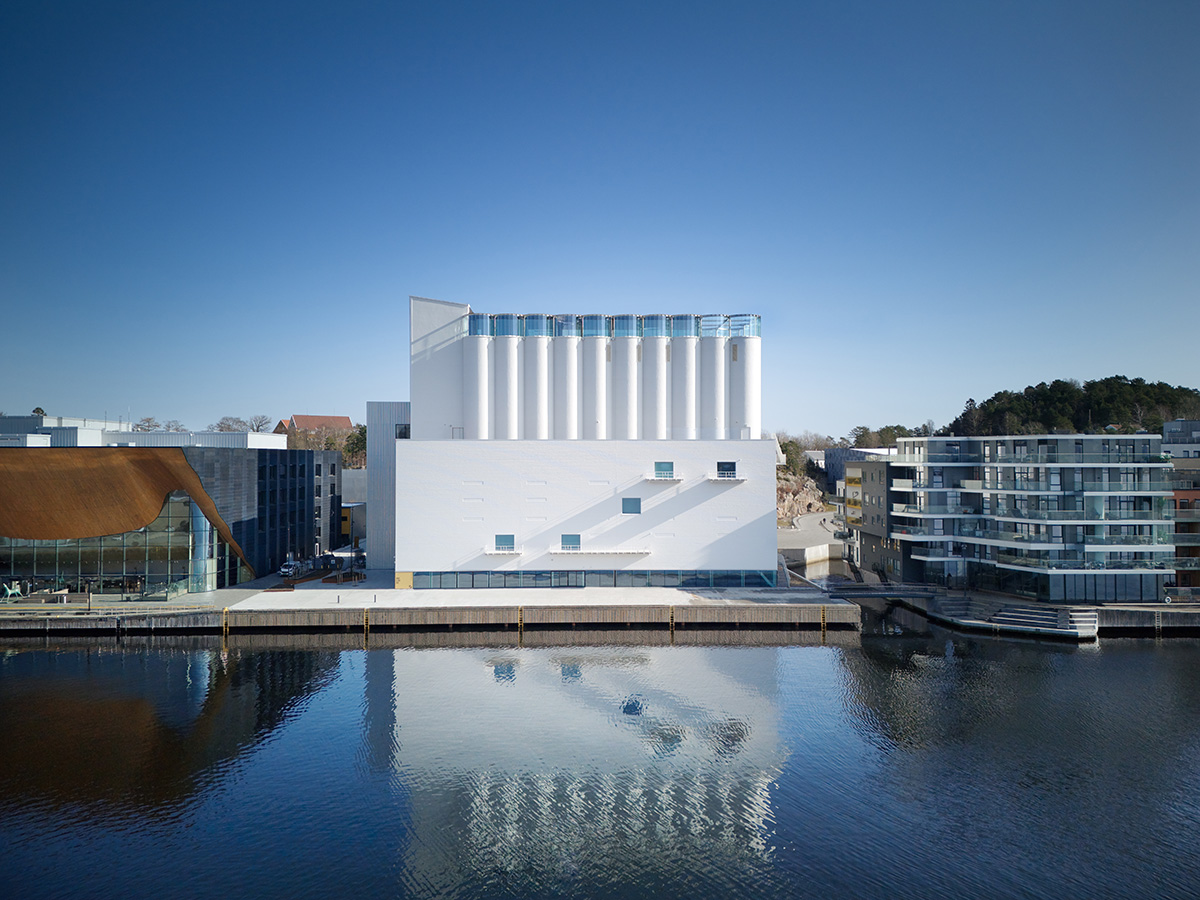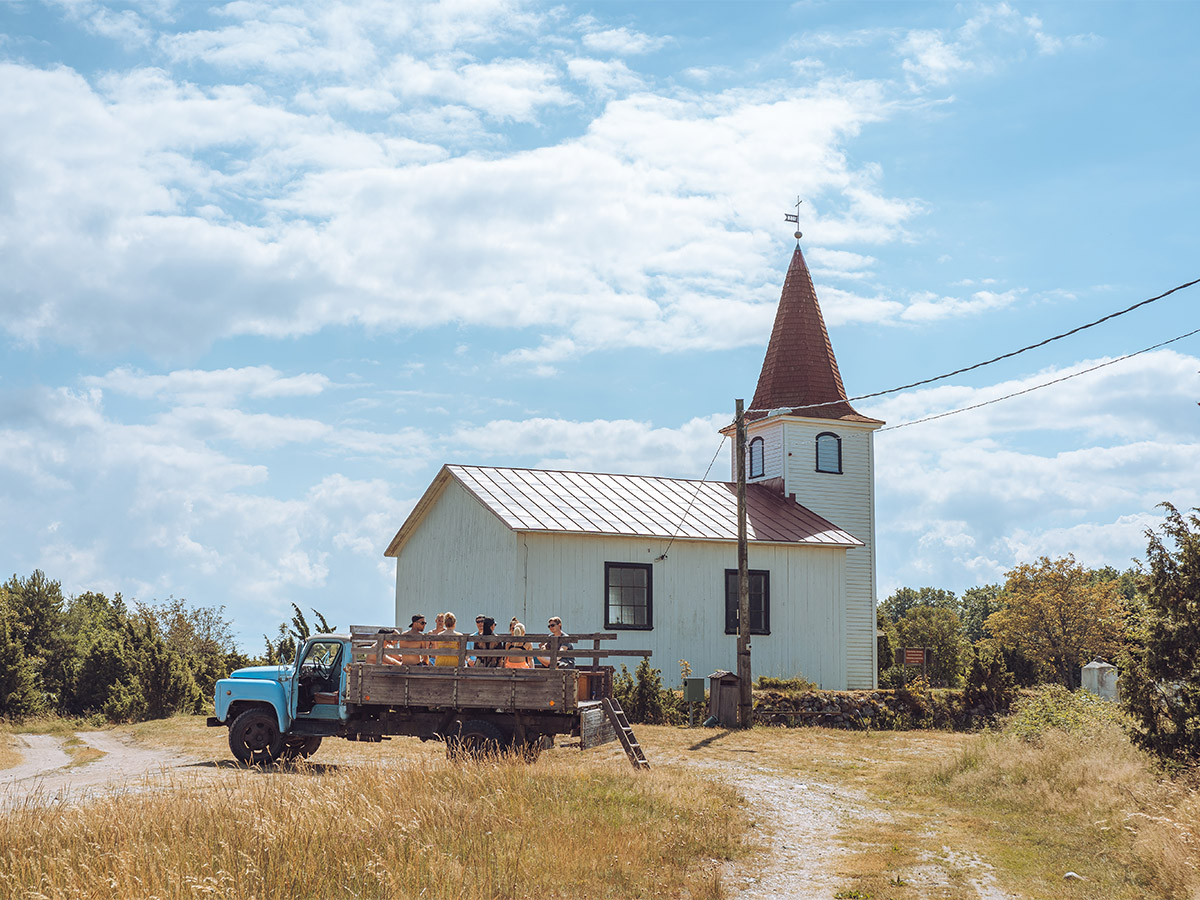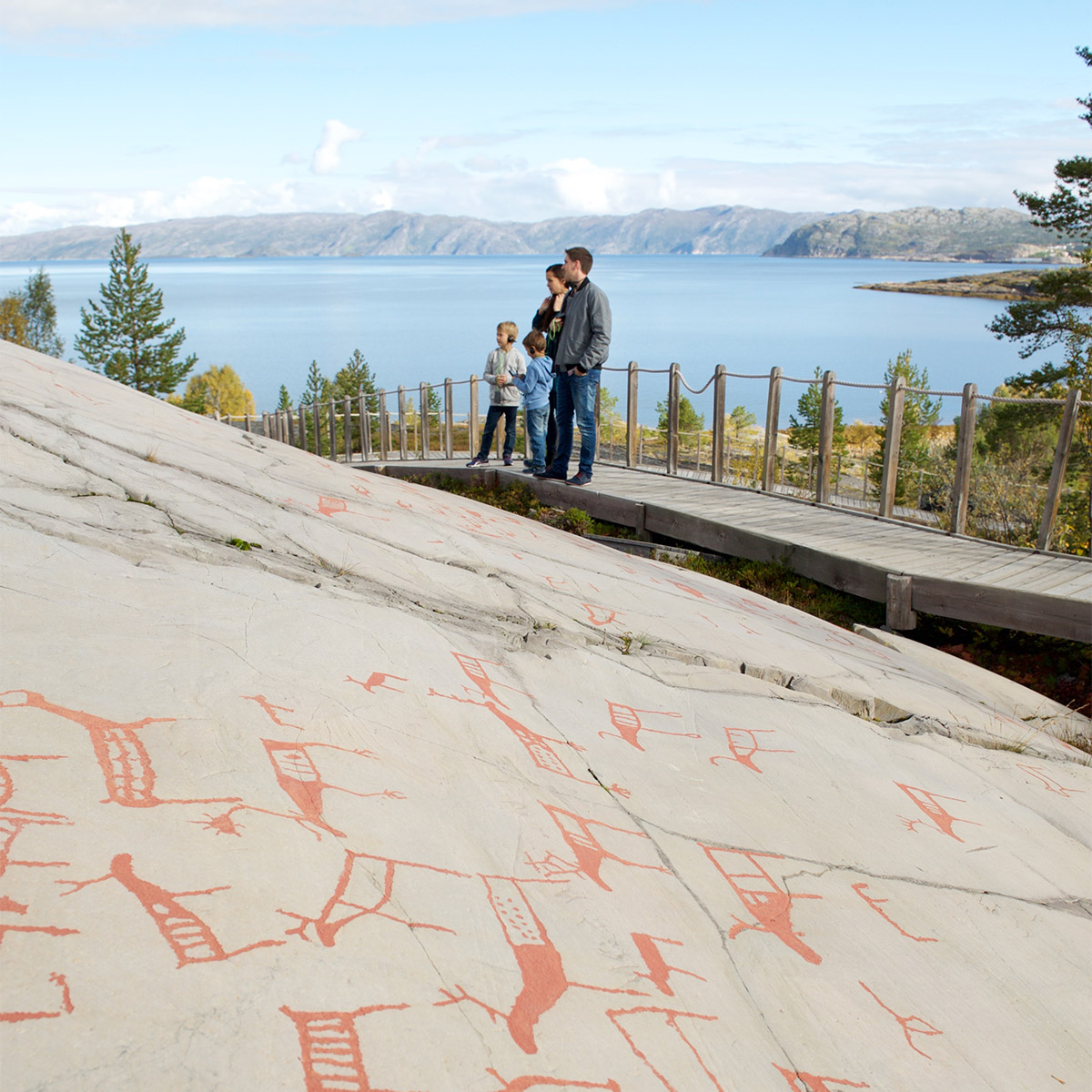Travel back in time with The Vestfold Museums
By Celina Tran
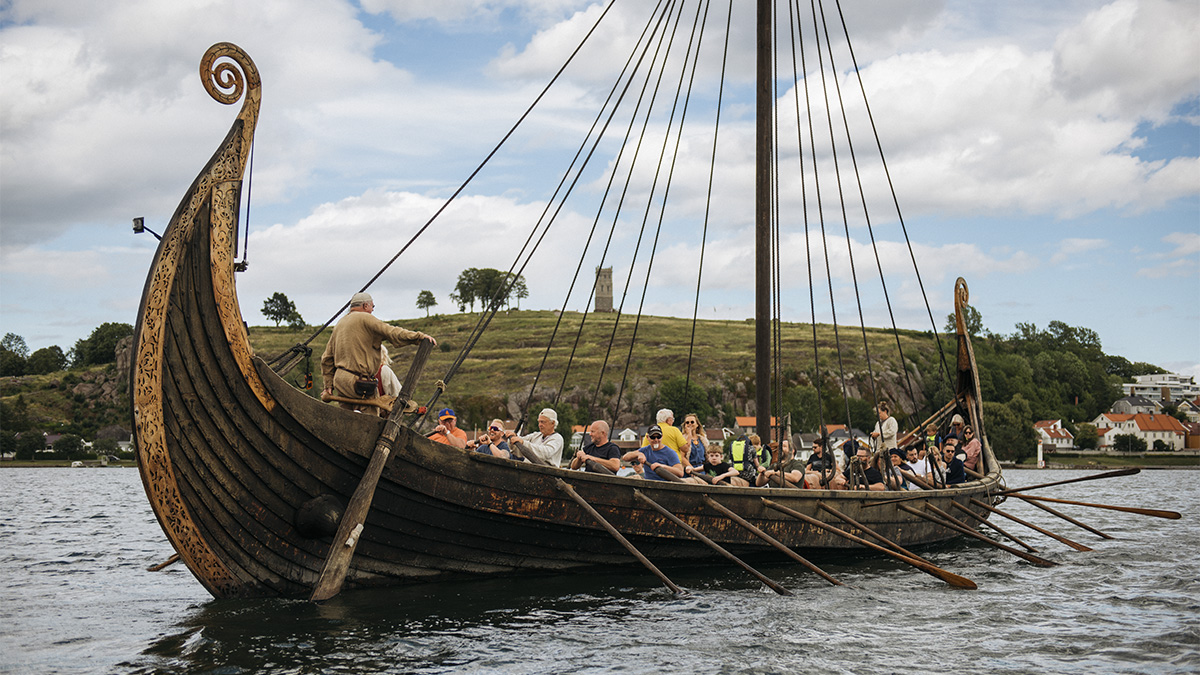
Slottsfjellmuseet Viking ship. Photo: Vestfold Museene
Despite being Norway’s smallest county, Vestfold offers thrilling city experiences, views unlike any other, and world-class art. On top of all that, it has a fantastic museum scene. The Vestfold Museums consists of many different museums, all offering fascinating escapes into the past.
Midgard Viking Centre
Right by the impressive Borre mounds, the burial site of many Viking kings according to Snorre Sturlason, stands Midgard Viking Centre. The museum is an activity-based learning centre for people of all ages, aiming to bring Viking history back to life.
Archery, javelin-throwing and forging – is there anything more Viking-esque? At Midgard Viking Centre, visitors are encouraged to step into the past and learn about what life was like at Borre 1,000 years ago by seeing, tasting and smelling the Viking Age – as well as meeting some Vikings too.
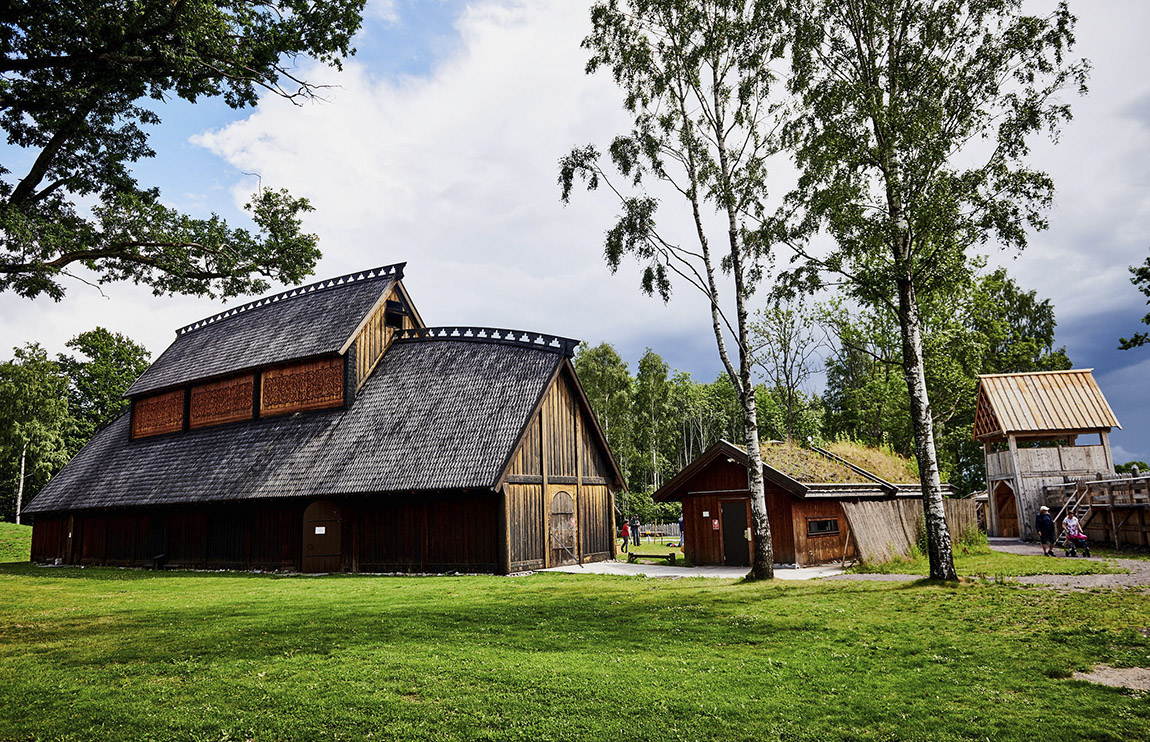
Midgard viking house. Photo: Midgard Vikingsenter
“Midgard Viking Centre is right by one of northern Europe’s largest collections of monumental burial mounds,” says Christina Leverkus who works at the museum. “We offer a unique museum experience, integrated with this special location.”
Leverkus says that in addition to the activities, they have a Viking Hall which also hosts historical events with live music, authentic Viking food, chieftains and skalds – the Old Norse poets. The hall celebrates its tenth anniversary this year!
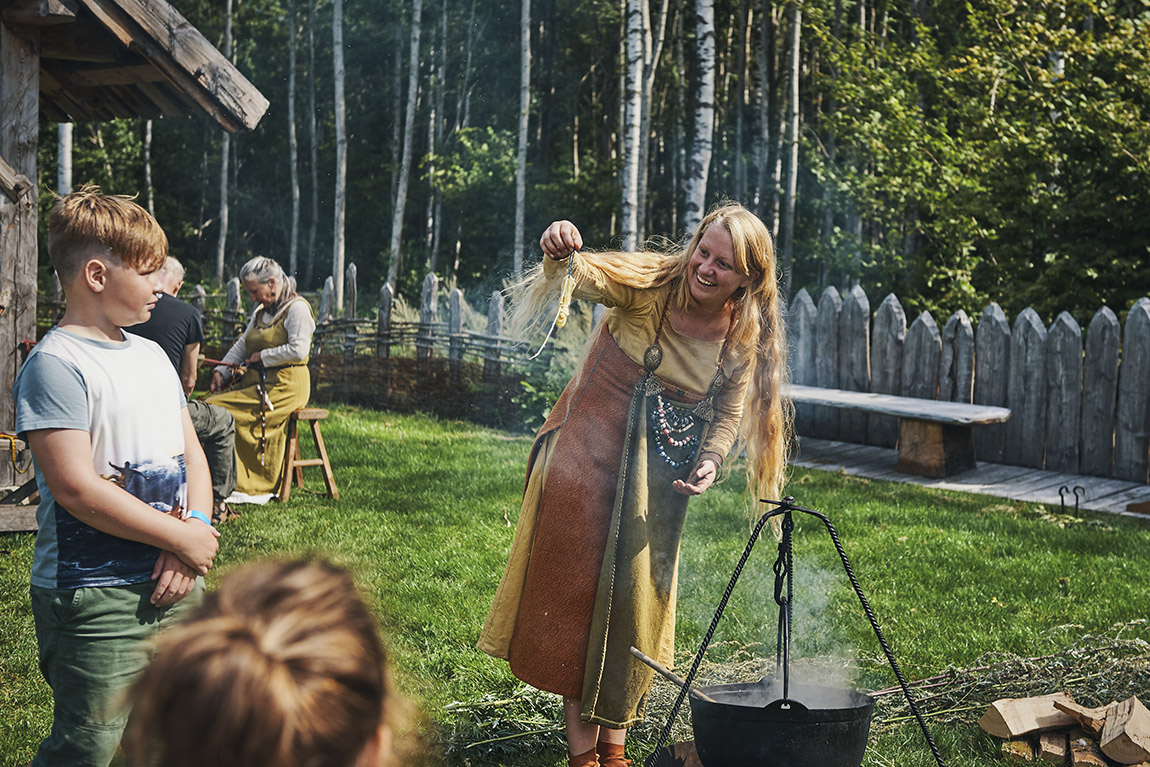
Vikings. Photo: Midgard Vikingsenter
“Adorned with traditional, stylised animal motifs, among other things, the Hall is used for biennial Viking festivals, where we welcome Vikings from all over the world to bring the old age back to life.”
Through its authentic landscape, architecture and great knowledge, Leverkus notes that Midgard Viking Centre aims to become Norway’s leading attraction for revitalising the Viking Age.
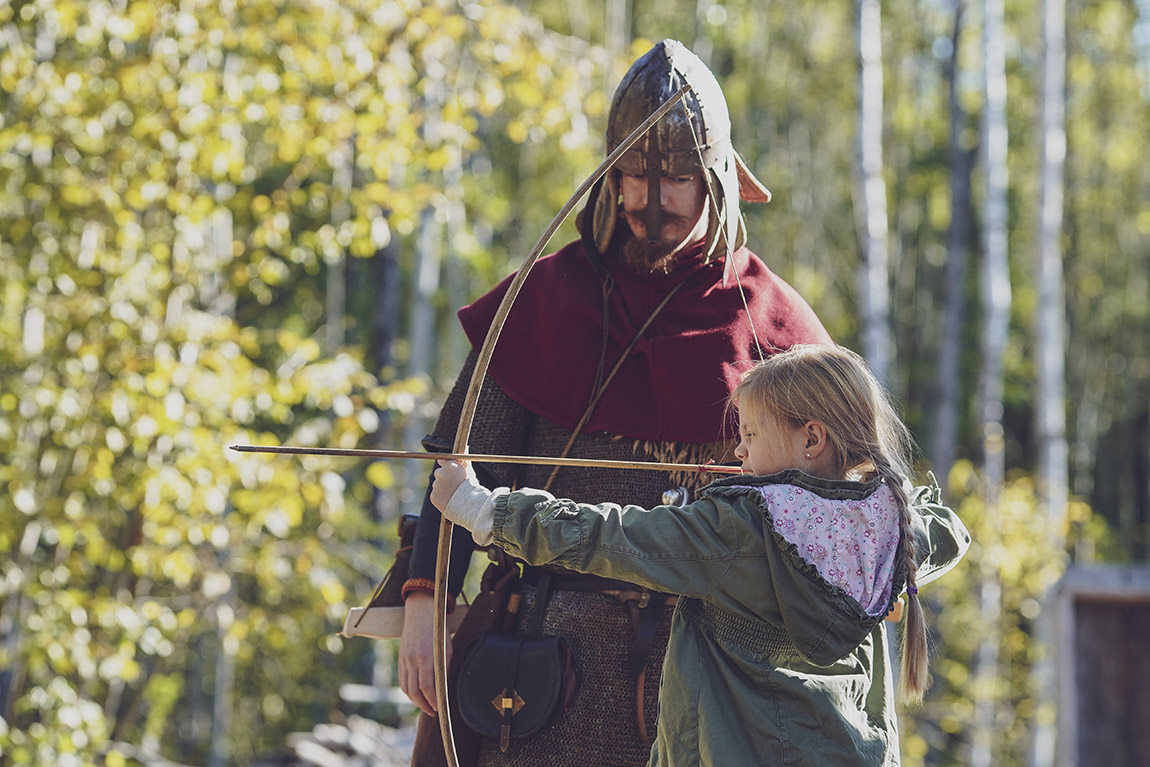
Midgard archery. Photo: Jonas Nord Gusland
The Slottsfjell Museum
At the foot of the historical hillock, Slottsfjellet, lies the Slottsfjell Museum. The museum offers a historical journey through Tønsberg, Norway’s oldest city, along with exciting ruins, whale skeletons and a magnificent Viking ship.
Erlend Tveite works at the museum and gives tours to audiences every day. “We have many different exhibitions. There’s a Viking hall with the only Viking ship in Norway currently on display for the public, a hall dedicated to the whaling of the late 19th and early 20th century, and a World War II bunker – but the most famous section is probably Slottsfjellet,” he says.
Atop Slottsfjellet or ‘the castle mountain’, you’ll be met by ruins of a fortress from the Middle Ages, along with the Slotssfjell tower, erected in 1888. Tveite describes visiting the site as a completely unique and authentic experience.
“The location tells its own story. When you’re there, you take a step into history. It’s easy to imagine yourself surrounded by people from the Middle Ages, biting their nails during sieges… you can visualise the events unfolding around you. It’s all very thrilling!”
Tveite says that there are many exciting upcoming events at the museum and hopes the different exhibitions will attract old and new visitors. “We want locals to get to know Tønsberg through our museum, while showing off Norway’s oldest city to visitors,” he says. “There’s something here for everyone.”
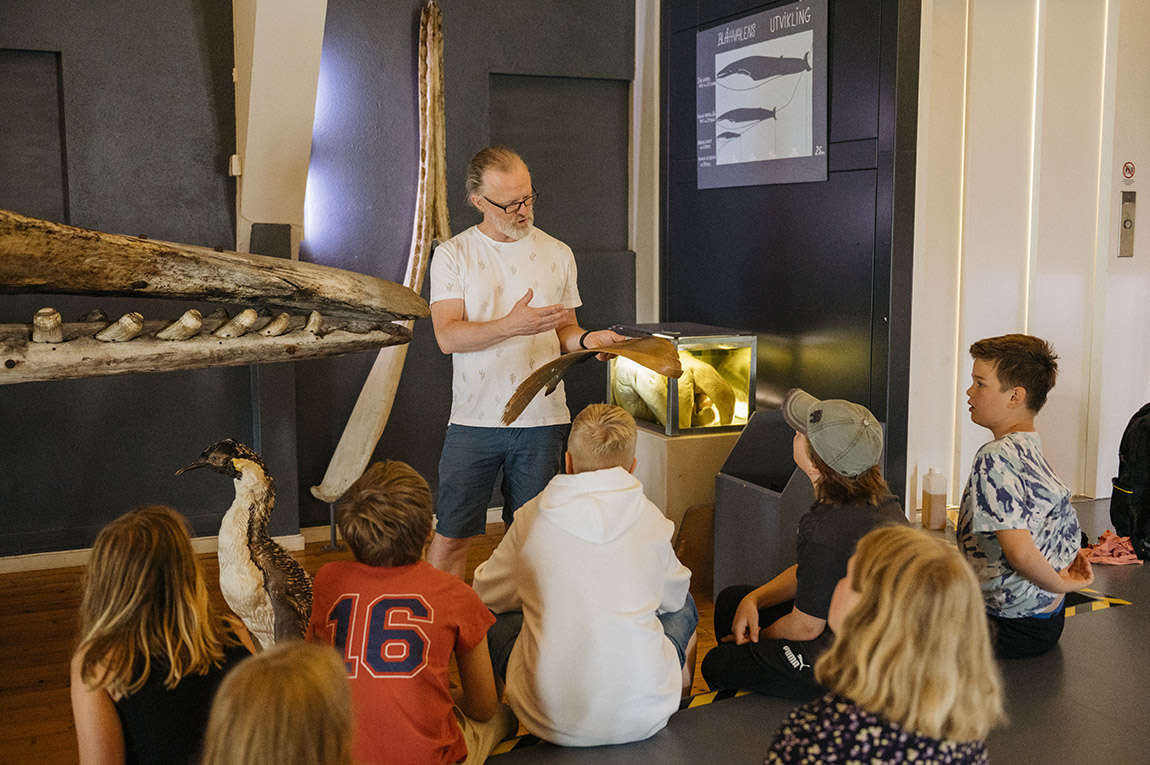
Slottsfjellmuseet Erlend showing off museum bones. Photo: Vestfold Museene
Munch’s House
Safely tucked between the narrow streets of Åsgårdstrand is Munch’s House, the artist home of the infamous painter Edvard Munch. Three years after his death in 1944, the museum became the very first Munch museum in the world and remains open to the public to this day.
Born in 1863, Edvard Munch was a Norwegian expressionist painter, famous for pieces like The Scream, Madonna and The Sick Child. Munch’s House offers a completely different, authentic perspective on the Norwegian artist and his life.
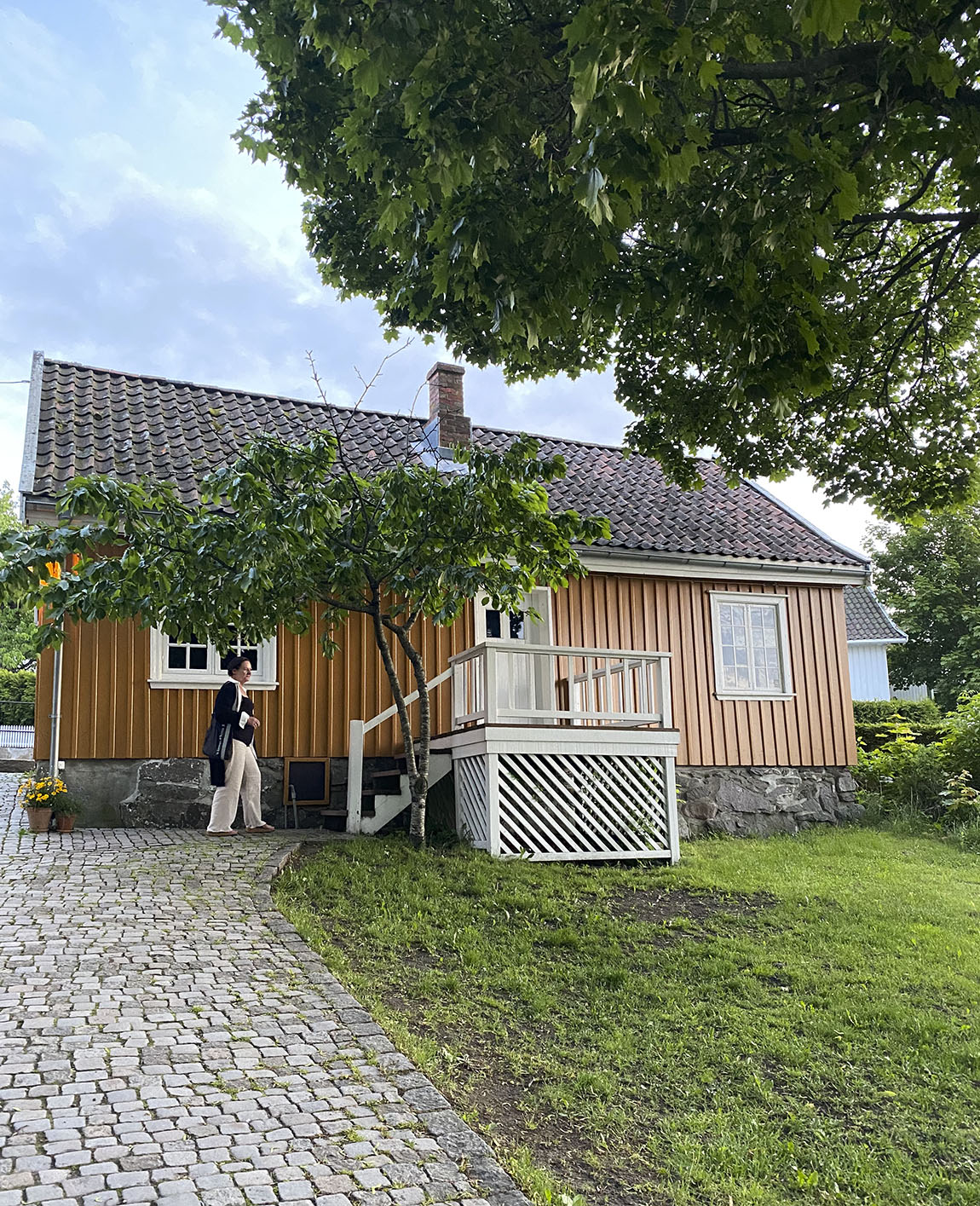
Munchs Hus. Photo: Munchs Hus
Maria Mikkola Muhrman, head of education at the museum, says Munch would spend his summers there, and painted some of his most famous works in the house. “This is a time-capsule – the house is exactly as it was back then. You can envision him walking in and out of the rooms,” says Muhrman.
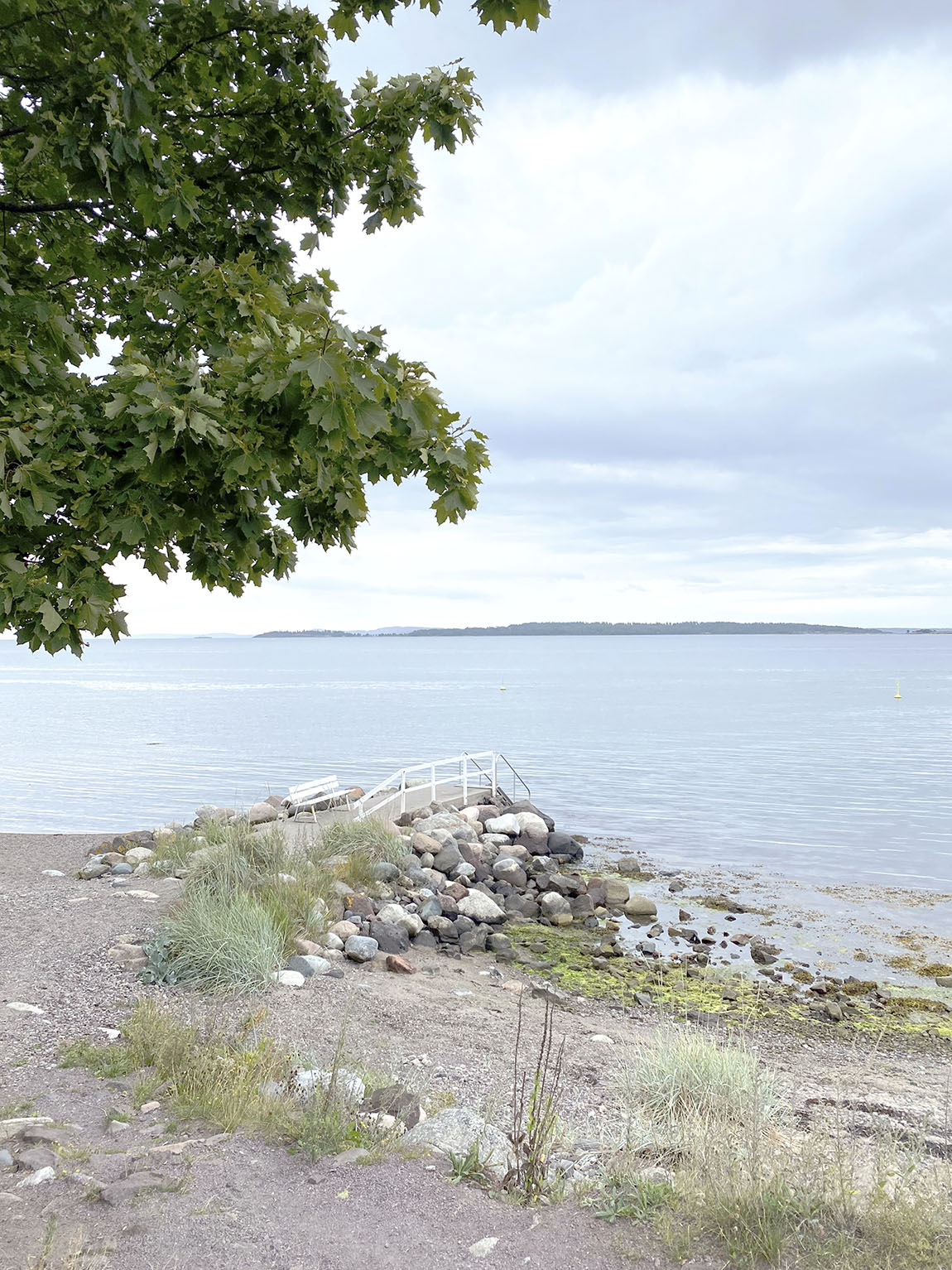
Water near Munchs Hus. Photo: Munchs Hus
Many of Munch’s pieces were inspired by Åsgårdstrand and his summer house. Visitors are encouraged to retrace his steps and walk the paths of the artist, experiencing the same views that inspired his paintings, many years ago. “In addition to guides, these hikes and children’s tours, we also offer tailored experiences, which can include a trip to a creative workshop,” says Muhrman.
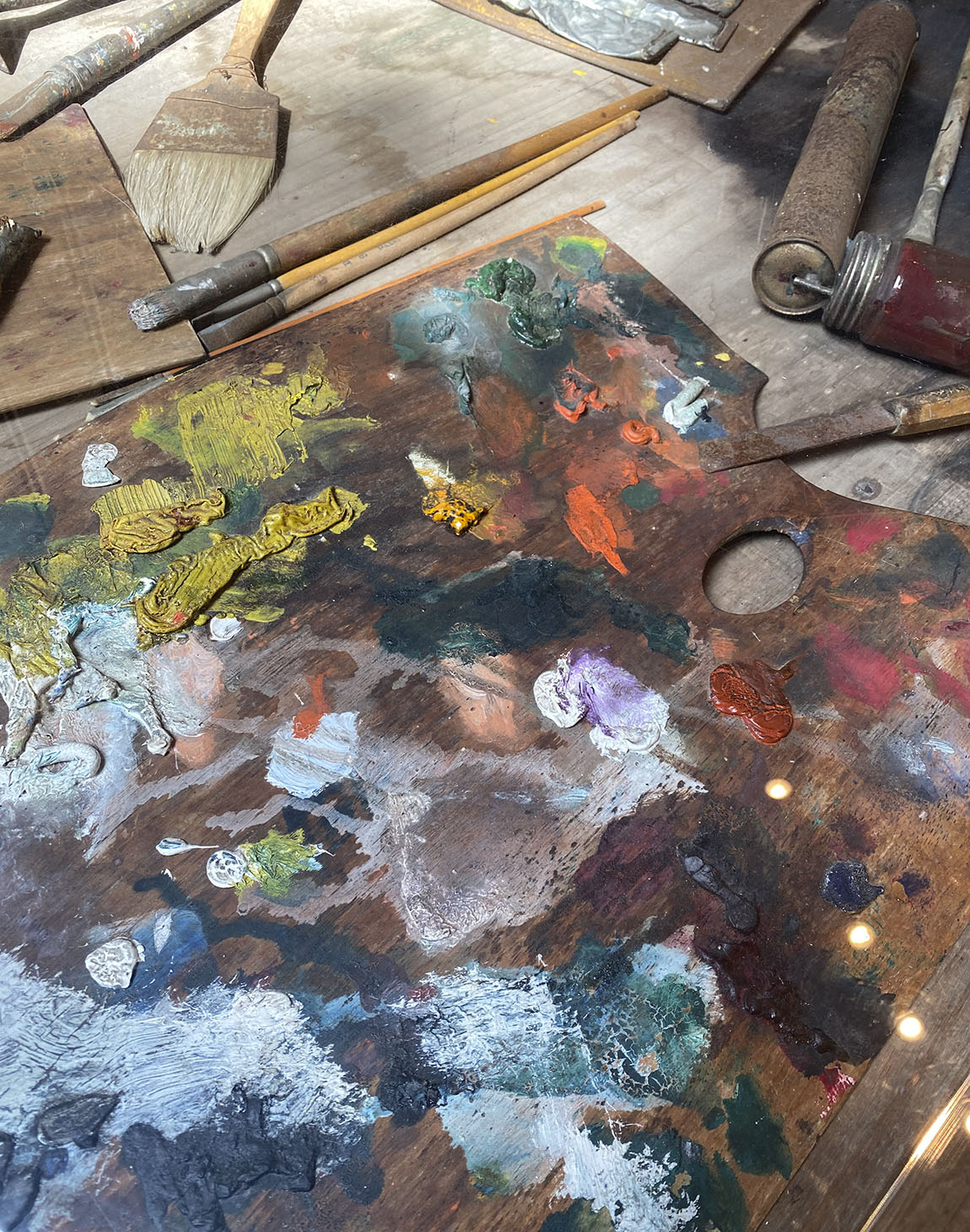
Photo: Munchs Hus
The Whaling Museum
Sandefjord was once considered the whaling capital of the world. Today, whaling remains a large cultural and historical influence on the coastal city, and it is home to one of the only European whaling museums.
Inspired by the Americans, whaling shipowner Lars Christensen decided that the world capital of whaling also deserved its very own whaling museum. He established the Commander Chr. Christensens Whaling Museum in 1917, gifting the museum and its exhibitions to Sandefjord Borough. Today, the museum is known simply as the Whaling Museum.
“The Whaling Museum does not only showcase Norwegian whaling history, but the whaling history of the world through Norway’s adventures to both the Artic and Antarctica,” says Eivind Thorsen, historian and advisor to The Vestfold Museums.
Thorsen explains that what started as exhibitions of polar animals and sea creatures has developed in many different directions, presenting both modern and historical perspectives on the whaling industry.
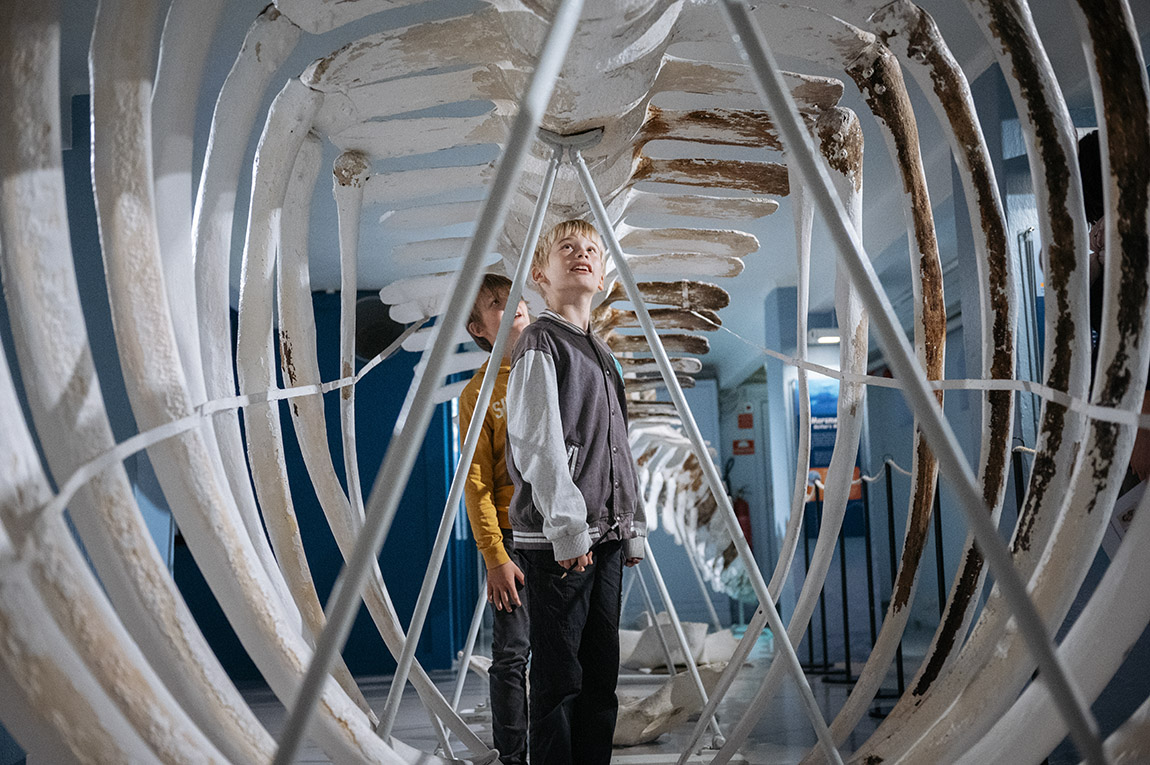
Hvalfangstmuseet: boys and skeleton. Photo: Hvalfangst Museet
“We still have the original section of the museum with its zoological exhibitions, including a very impressive full-sized blue whale model hanging from the roof, but we’ve also expanded. Modern exhibitions focus on the stories of those people associated with the whaling industry, especially the women and children who were left behind in Sandefjord while the men were off at sea,” says Thorsen.
A temporary exhibition tells the story of whalers unable to return home to Norway during World War II. Many of them left for other European Allied countries, such as Scotland, where they became some of the first to form the Norwegian army department. The department later became known as the ‘whaler brigade’, and was used to recruit whalers for other combat branches.
“We want to show the many sides of whaling,” says Thorsen. “Now, our focus is to educate visitors about sustainability and marine ecosystems, using the past, where whales were nearly hunted to extinction, to show how not to treat the ocean.”
The new exhibitions will integrate audiovisual effects, allowing the audiences to see and hear whales as they learn.
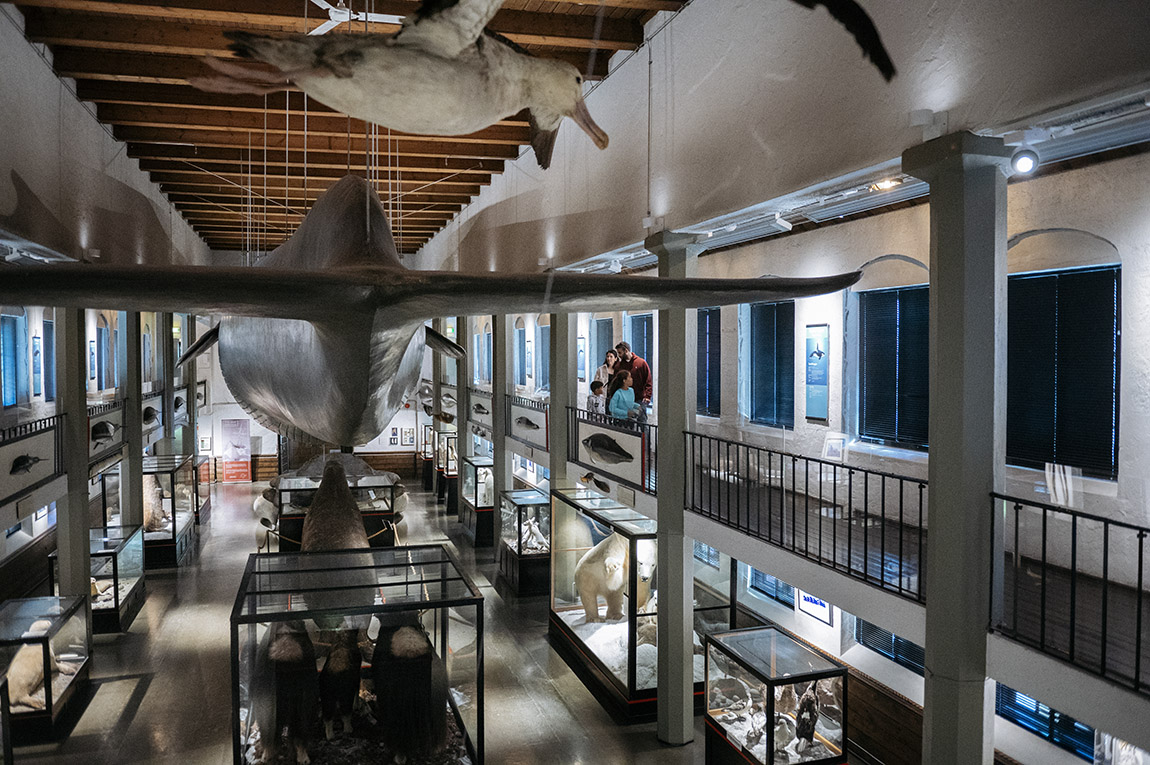
Hvalfangstmuseet: ceiling and whale. Photo: Hvalfangst Museet
The Vestfold Museums also consists of the Berger Muusem, Eidsfoss Ironwork, Larvik Museum, the Aluminum Museum, Haugar Art Museum and the Thor Heyerdahl Institute. Web: www.vestfoldmuseene.no Instagram: @vestfoldmuseene Facebook: vestfoldmuseene
Subscribe to Our Newsletter
Receive our monthly newsletter by email


